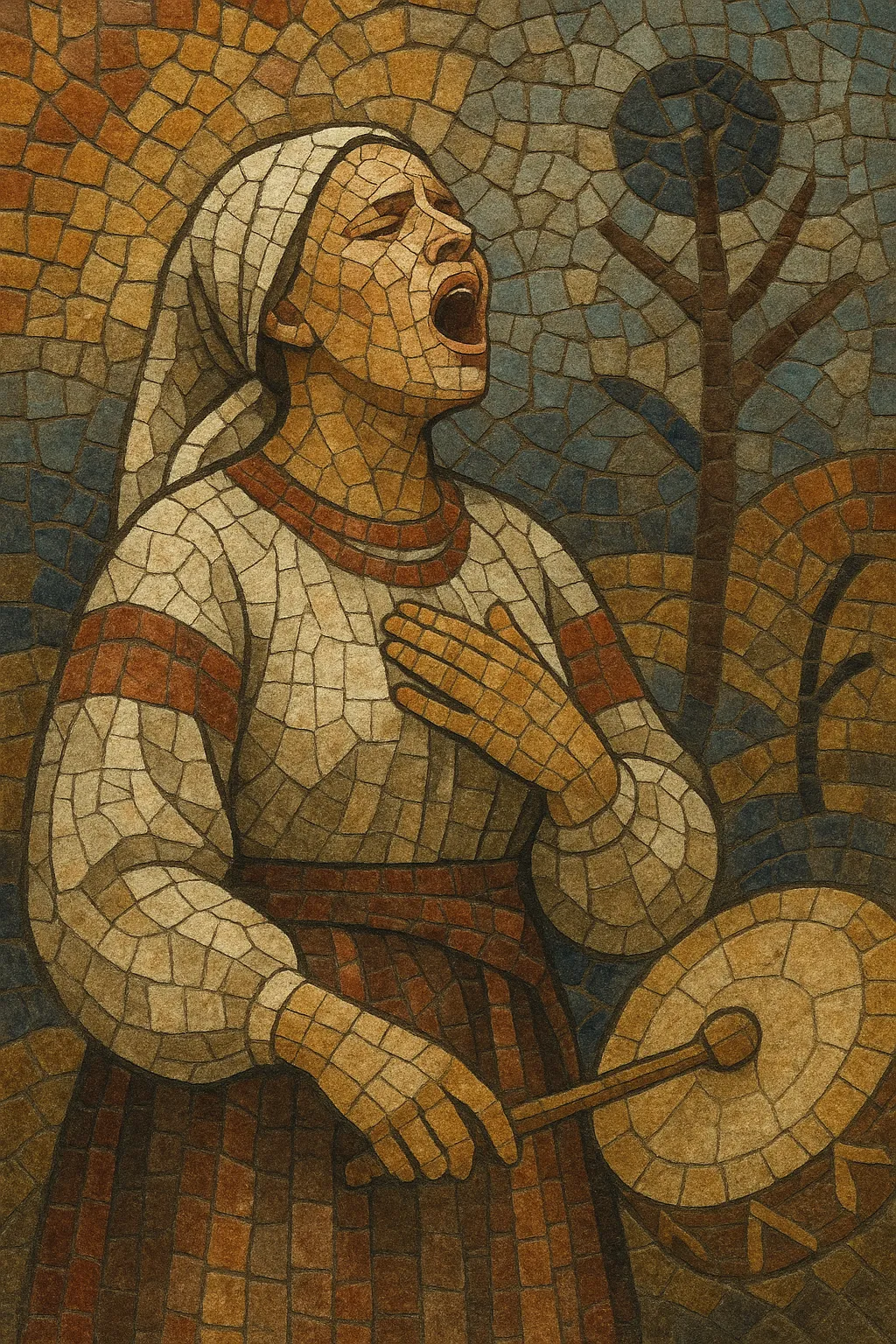White voice is a traditional Eastern European folk singing technique—codified as a genre label in the late-20th-century folk revival—that features a bright, powerful, open-throated timbre projected without classical vibrato. Singers carry the sound on resonant, forward-placed vowels to cut through open-air settings.
It is closely associated with Polish (biały głos), Ukrainian, and Belarusian rural repertoires: wedding songs, field and ritual chants, work songs, and seasonal carols. Typical textures are unison or heterophony over a drone, with modal melodies (often Dorian or Mixolydian), parallel 3rds/4ths/5ths, and strong rhythmic pulse when dance-derived.
On contemporary stages, the style appears a cappella or with folk instruments (frame drum, fiddles, dulcimer/cymbały, hurdy-gurdy, bagpipes/dudy, sopilka) and in fusions that add bass, percussion, and electronics.
White voice has deep roots in rural vocal practices of Central and Eastern Europe, especially Poland, Ukraine, and Belarus. Before amplification, singers developed a bright, penetrating tone to project across fields and village gathering spaces. The technique served agricultural calendars, weddings, and rites of passage, with lyrics that carried communal memory and local dialects.
In the mid-20th century, ethnographers and state folk ensembles recorded and staged traditional repertoires. While these performances sometimes softened the raw timbre for concert stages, they preserved melodies, texts, and dialect variants that later revivalists would study.
After the fall of the Iron Curtain, independent folk collectives and workshops in Poland popularized the term “biały głos” (white voice). Community-led research trips to villages, archival digs, and peer-led training re-centered the original, open-throated projection and modal phrasing. Parallel efforts emerged in Ukraine and Belarus, feeding an interconnected regional revival.
World-music circuits, festivals, and online media amplified the sound internationally. Artists blended white voice with frame drums, hurdy-gurdies, strings, and later electronics, crossing into folktronica and world fusion. The technique is now taught in workshops worldwide, while archival fidelity and creative fusion coexist in a healthy, dialogic scene.


